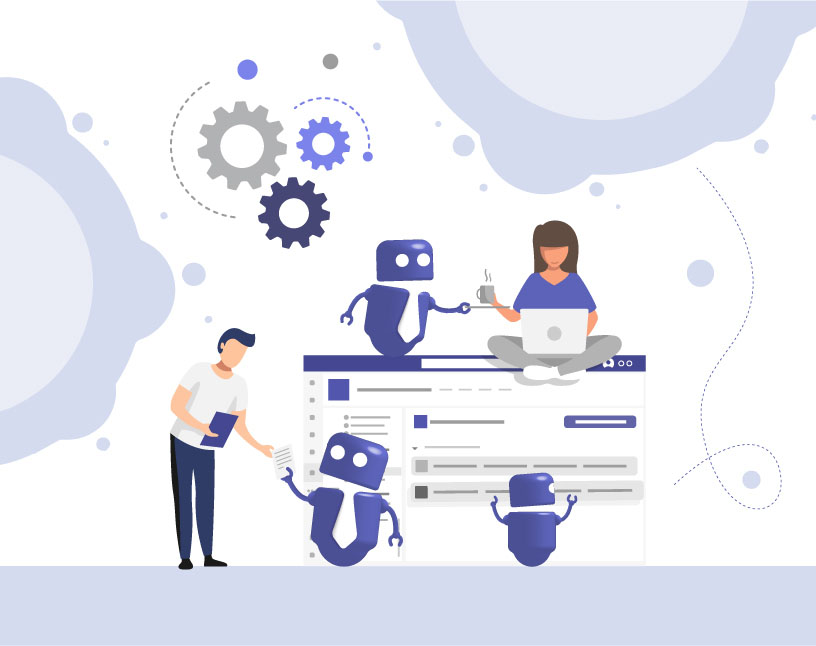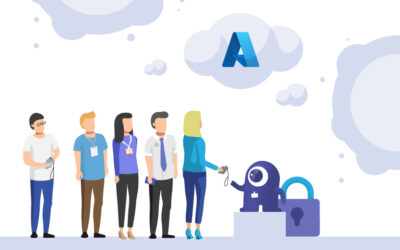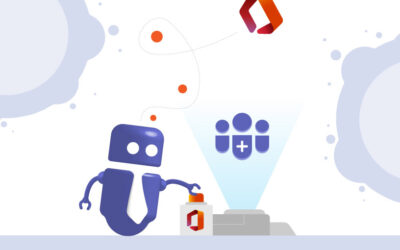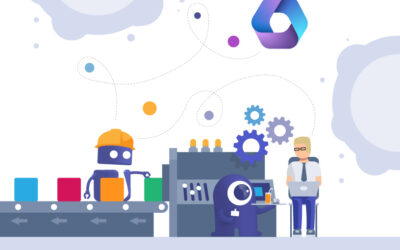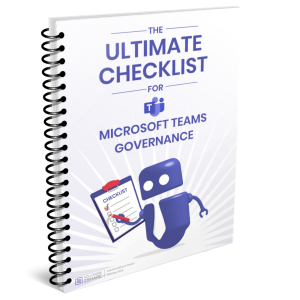Possibilities with Microsoft Teams – Using Bots
Teams is a messaging tool that enables text communications between users, whether they are in the same office or work remotely. It supports group chat rooms with threaded conversations, as well as private messages between individuals. Users can jump from instant messaging to a video call at the push of a button. Teams also comes with the possibility of implementing bots, helping to make collaboration more efficient. In the following we will show you the possibilities with Microsoft Teams using Bots.
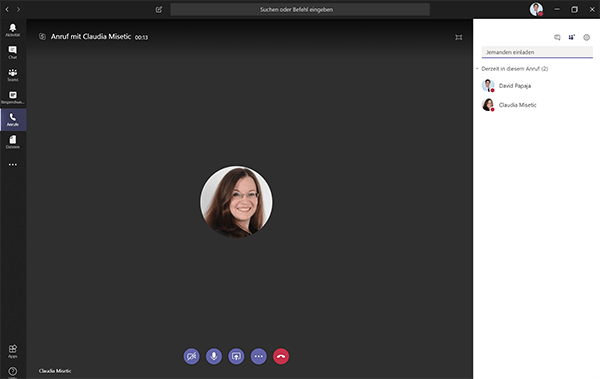
When you open Teams, you see a left-hand rail that includes the Activity, Chat, Teams, Meetings and Files tabs. Click into a tab to see the different channels and files within the subgroup. Teams lets you silo topics within a channel in order to help you manage conversations.
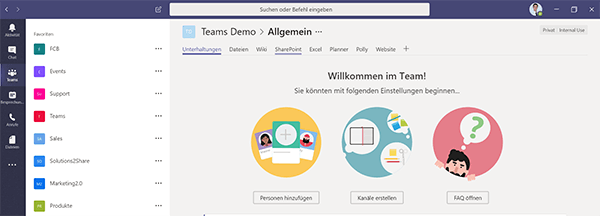
Whenever you are mentioned directly anywhere in Teams, a red alert pops up on the Activity tab and directs you to your destination. You can customize your alerts to notify you only when you are mentioned directly, or you can set alerts for specific rooms. You can also mark activities as ‘read’ and ‘unread’.

You can perfectly schedule video calls by viewing someone’s Outlook calendar to determine a suitable time. Users can view and edit a document or application while having a conversation. Teams meetings provides Meeting Notes tab, which gives you the possibility to create and edit visible discussion notes for all users in real time.

At the top of every channel you can see a list of service and tools that provide more context to the channel. Tools like Zendesk, Microsoft Power BI and Excel are easily accessible so users can view third-party tools or external data within the channel. All cloud-based tool that update in real time will update in the feed. For example, you can plug a Twitter feed or Facebook page into a Teams channel.
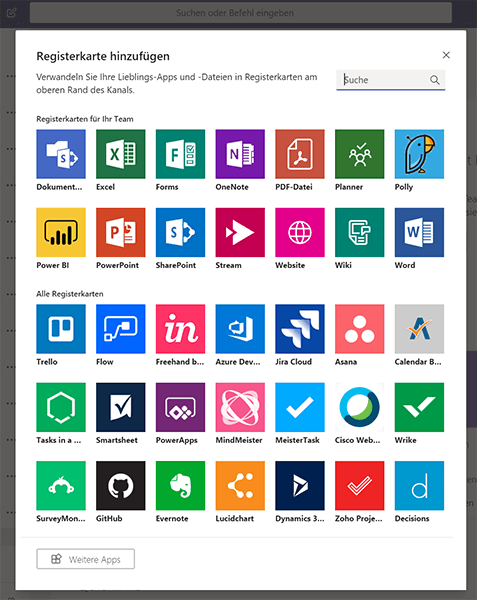
Integrated Bots in Microsoft Teams
No chat app would be complete without its unique bots. For example, Teams integrates with Polly-Bot. Polly allows you to easily take polls within a channel. By integrating polls in the conversation, your workflow is no longer interrupted. Polly comes with a lot of functionality, like commenting or scheduling polls and votes on multiple options.
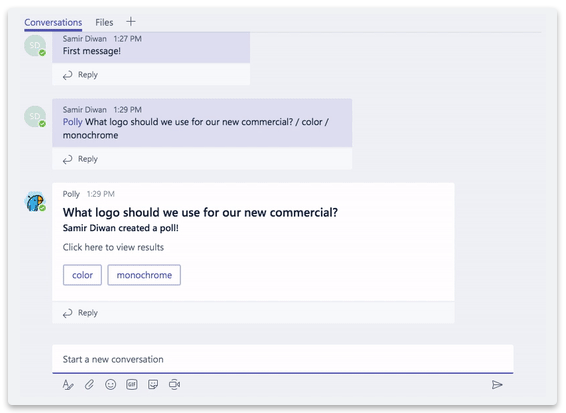
T-Bot allows you to query automated answers about the Teams application. It can answer many of your questions in a chat-based interface in your Microsoft Team app. By using natural language inquiries, just like talking to another person, ask T-Bot questions about the task, feature or other items you are looking for help on. T-Bot will try to provide you the best possible answer based on the content of your question and has a built-in feedback system to learn when an answer is on the right track or not related to what you asked about. That feedback loop will help T-Bot become better at responding to your questions over time and improve the service. If you ask e.g. what a channel is, the bot will show you content to help you.
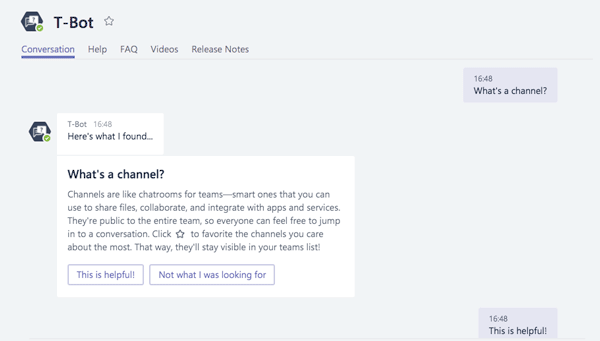
Another interesting possibility is Who-Bot. The Who-bot has been around for quite some time now and helps you find employees or specific information about an employee. Just ask a question like: ‘Who am I?’, and the Who-bot will gives you all basic Information about you.
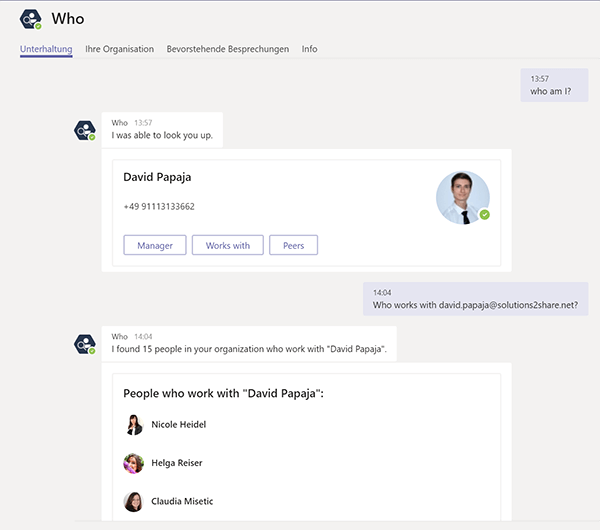
You can also find topic experts, someone’s collaborator, direct reports, manager and peer group as well as people you emailed or messaged about a specific topic. Additionally, Who-bot gives you a organization chart and an overview of upcoming meetings as well as who is owner or member of the meeting.
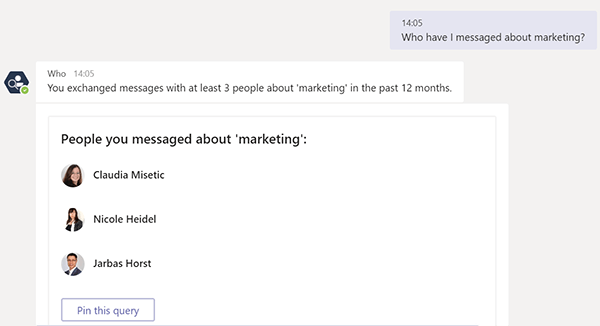
At the end of the day, bots are only one component of apps for Teams, but what makes bots unique is that they bring intelligence to chat within your Teams channel or to your own personal conversation with a particular bot. Bots appear just like any other team member in your organization, except their avatar is a hexagon instead of the traditional circle, and they are always online. The possibilities with Microsoft Teams using bots can make your work more efficient and be an real enrichment for your company.

David Papaja has been involved with Microsoft 365 since 2018, specialising in Microsoft Teams governance and guest management. He shares knowledge about M365 and supports the introduction of governance solutions.
